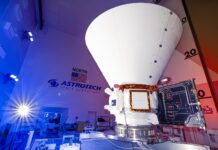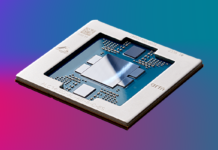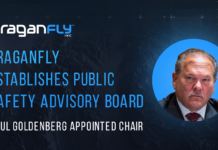Unveiling the Backbone of NASA’s Success: Mission Support
NASA, the United States’ renowned space agency, is celebrated globally for its groundbreaking missions, such as probing the sun’s mysteries and delving into the universe’s history. These monumental achievements are not solely the result of advanced technology or innovative science; they are powered by a fundamental principle: teamwork. At the heart of this teamwork lies Mission Support, a critical component ensuring NASA’s missions, centers, and programs are equipped with the necessary capabilities and services to achieve their ambitious goals. Through this article, we will explore the pivotal role of Mission Support within NASA, using the Roman Space Telescope as a prime example, while also providing insights into its comprehensive functions.
A Closer Look at NASA’s Mission Support
At NASA, Mission Support extends far beyond the realm of science and engineering. It is a collaborative effort that encompasses various facets of the organization, guaranteeing that each mission has the resources and infrastructure required for success. A prime example of Mission Support in action can be seen with the Roman Space Telescope. This ambitious project is not the work of scientists and engineers alone. Instead, it is a confluence of efforts from various departments within NASA.
For instance, NASA’s financial office plays a crucial role in meticulously planning the budget for the Roman Space Telescope, ensuring that all financial aspects are accounted for and managed efficiently. Meanwhile, engineers are tasked with designing the telescope, utilizing tools and resources developed in conjunction with NASA’s shared services and information technology offices. This collaboration extends to NASA’s engineering authority, which rigorously evaluates and verifies the telescope’s design to meet all necessary standards and requirements.
Moreover, the telescope project involves international cooperation, with NASA’s international relations team managing collaborations with space agencies from other countries. This holistic approach exemplifies Mission Support, where every aspect of the mission is seamlessly integrated to achieve a common objective.
Key Functions of Mission Support
Mission Support is a multifaceted entity within NASA, responsible for a wide array of functions that are crucial for the agency’s success. Here are some of the core functions of Mission Support:
Budget Planning and Execution
One of the primary responsibilities of Mission Support is to meticulously plan and execute budgets for various aspects, including safety, security, mission services, construction, and environmental management. By ensuring that resources are allocated efficiently and effectively, Mission Support lays the groundwork for successful mission execution.
Strategy and Governance
Mission Support is also entrusted with executing strategy and governance, ensuring that all activities are financially sound and aligned with NASA’s overarching goals. This involves a continual assessment of mission priorities and the alignment of resources to serve NASA’s missions effectively.
Risk Management
Addressing financial, operational, legal, and reputational risks is another critical function of Mission Support. By proactively identifying and mitigating these risks, Mission Support ensures resilience and the successful execution of missions. This risk management framework is vital for maintaining the integrity and reputation of the agency.
Collaboration with Mission Directorates and Centers
Mission Support actively collaborates with mission directorates and centers across NASA to prioritize services that are most urgently needed. This coordination ensures that all missions have access to the resources they require, enabling them to achieve their objectives efficiently and effectively.
Integration of Services
To maximize efficiency and effectiveness, Mission Support integrates services across the agency. This integration facilitates smooth operations and ensures that all departments work in harmony towards common goals.
The Future of Mission Support
As NASA continues to embark on new missions and explore uncharted territories, the role of Mission Support becomes increasingly vital. Current and future missions demand significant support to navigate complexities and achieve success. Mission Support is diligently working to ensure that NASA can continue to explore the unknown, innovate for the future, and inspire the world.
Additional Insights and Perspectives
Understanding the significance of Mission Support within NASA provides valuable insights into the agency’s operational framework. The success of NASA’s missions is not solely dependent on technological advancements; it is a testament to the collaborative efforts and meticulous planning of various departments working in unison. This holistic approach has set a benchmark for other space agencies worldwide, highlighting the importance of comprehensive support systems in achieving ambitious goals.
Moreover, NASA’s commitment to international collaboration, as seen in the Roman Space Telescope project, reinforces the importance of global partnerships in advancing space exploration. By working together with other nations, NASA not only shares its expertise but also gains valuable insights and resources, furthering its mission to explore the cosmos.
Conclusion
Mission Support is the unsung hero behind NASA’s remarkable achievements, ensuring that every mission is backed by the necessary resources, infrastructure, and collaboration. By understanding the intricate workings of Mission Support, we gain a deeper appreciation for the teamwork and dedication that drive NASA’s success. As the agency continues to push the boundaries of space exploration, Mission Support will remain a cornerstone of its endeavors, paving the way for future innovations and discoveries. For more information on Mission Support, you can visit the MSD Organization.
For more Information, Refer to this article.































![How Samsung Integrates Accessibility into Its Home Appliances [Interview] How Samsung Embeds Accessibility and User-Centered Values Into Its Home Appliances](https://www.hawkdive.com/media/samsung-digital-appliances-accessibility-user-centered-values-bespoke-ai-family-hub-bona-lee_thumb72-218x150.jpeg)


